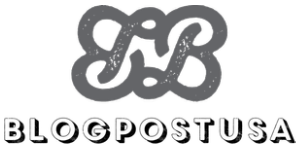The ‘User Backward’ Approach In Industrial Design Companies
Industrial design companies bridge the gap between day-to-day problems and user-friendly solutions by bringing innovative ideas to life. These companies employ resources for exhaustive product design research to design products that align with customer needs and expectations.
For any industrial design company to stay ahead of its competitors, understanding the user backwards and investing time and effort in design thinking is extremely important. Through these two ways, industrial design companies like the Future Factory, not only enhance the lives of the customers but also drive revenues to the organization.
What is the user backwards approach?
The user backwards approach starts at the expected goal and looks for a way to get back to the initial problem conditions. In product design and industrial design, this approach helps create a more efficient and focused new product development process.
Customers are unlikely to care about any new product or service unless it proves to be a benefit for them. Hence, for adding value to the lives of customers, looking at product ideation from the customer’s perspective is crucial.
For creating satisfactory user interface design, Future Factory, the best product design agency in India, focuses on the target audience for whom the product is being designed, what their existing problem is, and how the current market alternatives are unable to solve the problem.
Source: Pexels
Key elements of the user backwards approach
The user backwards approach to design thinking and innovation has namely three key elements that help design products with a broader impact on the entire society. These elements are –
- Knowing the user and their goals – Without knowing the customer and their goals, no matter how creatively cool the product is, it is likely to be unsuccessful. Having a clear understanding of the customer’s problems, and carrying out a thorough market analysis, industrial design companies can accordingly work on designing a product that resonates with the target audience and articulates the values that the customer will receive on trying the new product solution.
Source: Pexels
- Identifying possible solutions – Before rapid prototyping any new product design, make sure to assess and analyze the scope of any more possible solutions. Making sure to cross out all the alternatives and designing the best one that matches the customer’s needs is necessary. With the resources available in hand, scan through the competition and stay proactive in reading the customer’s minds.
- Focusing on the big picture – Although the size of your initial solution might not be significant, you should be able to describe a route that will lead to a significant customer benefit and how it would affect the organization. Focusing on the big picture implies thinking big – to think what your organization could do if it had all the money and resources with no restrictions. During brainstorming sessions, the design team should always question if their idea or concept is big enough to be meaningful for the team.
Conclusion
The user backward approach is counter-intuitive for most people. At Future Factory, this approach helps the designers conduct intensive research to understand the motives and desires of the target audience. To know more about design research, click here.

